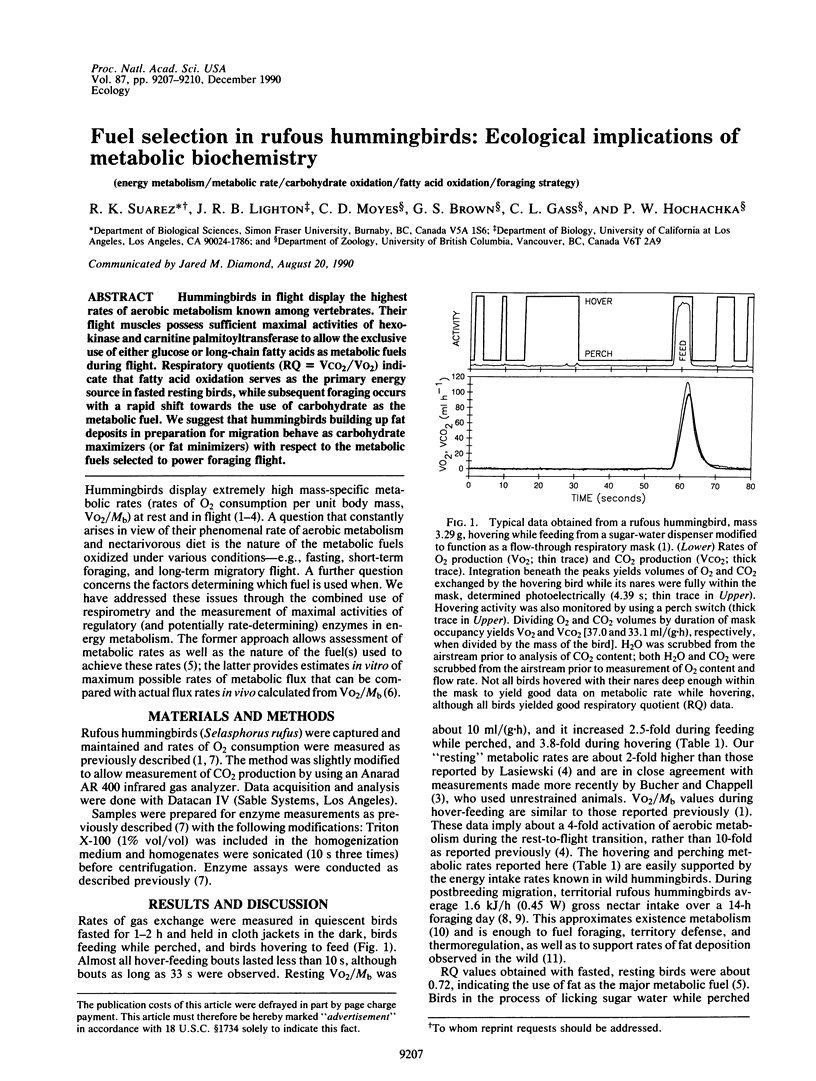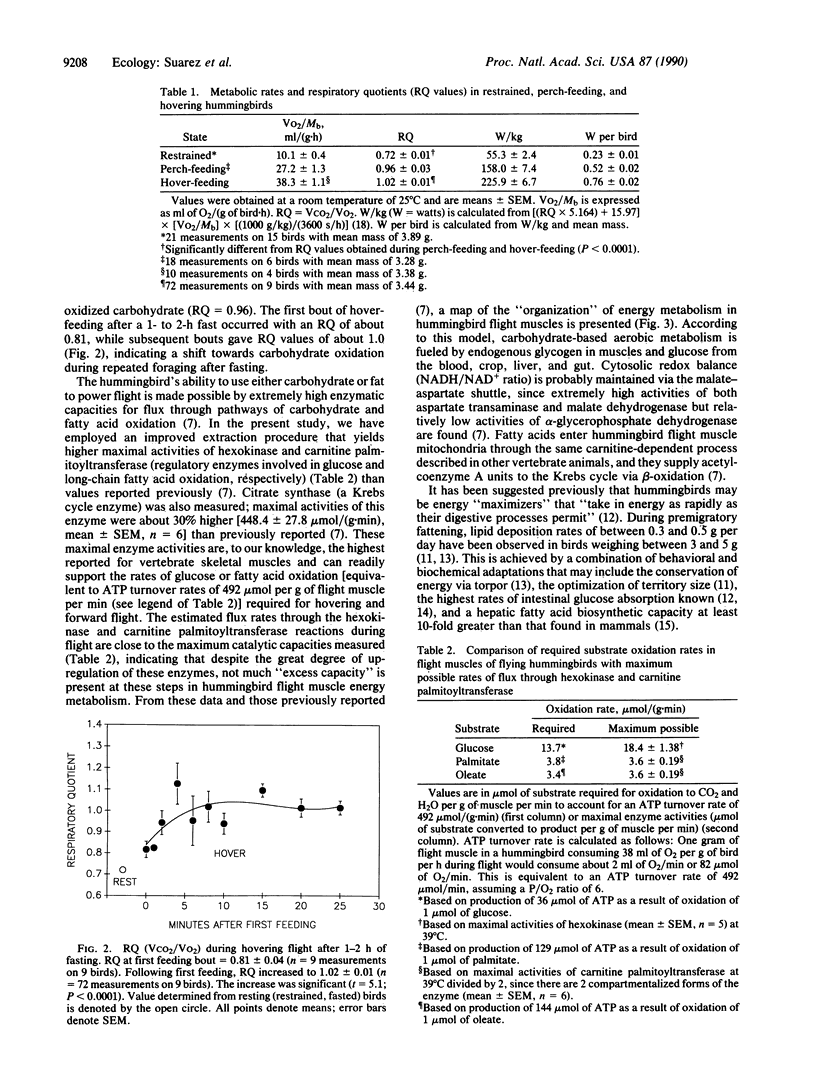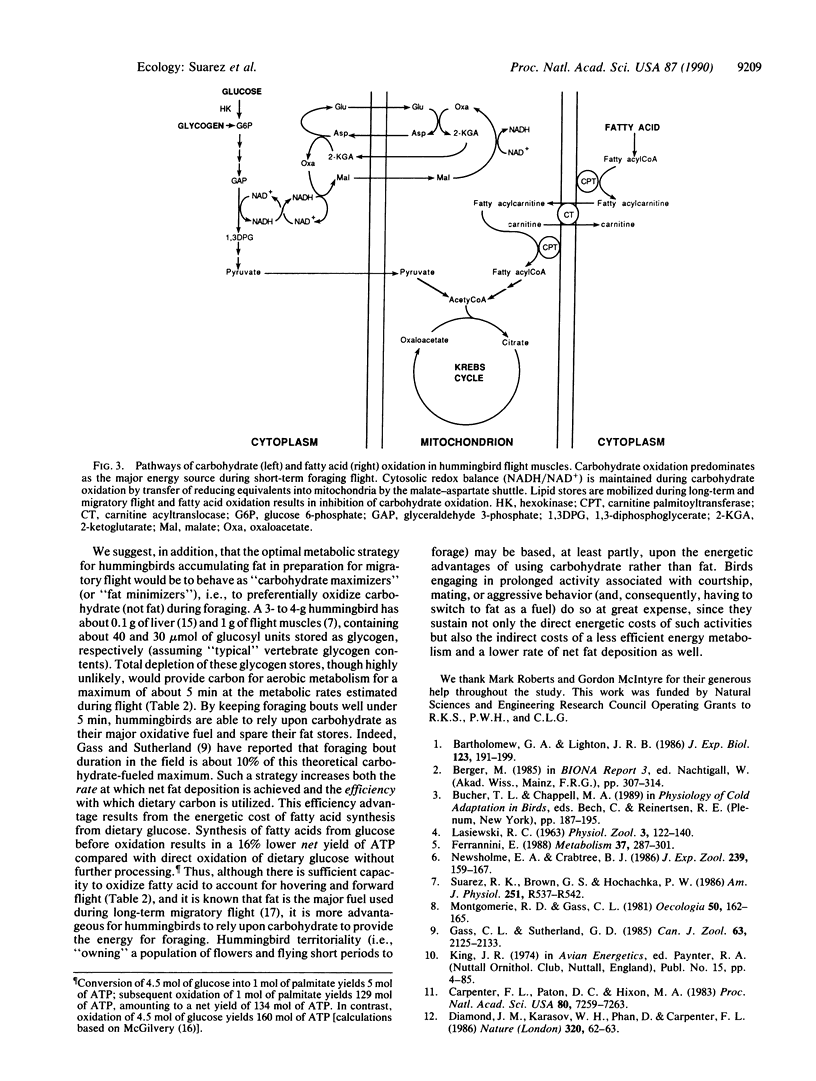Abstract
Hummingbirds in flight display the highest rates of aerobic metabolism known among vertebrates. Their flight muscles possess sufficient maximal activities of hexokinase and carnitine palmitoyltransferase to allow the exclusive use of either glucose or long-chain fatty acids as metabolic fuels during flight. Respiratory quotients (RQ = VCO2/VO2) indicate that fatty acid oxidation serves as the primary energy source in fasted resting birds, while subsequent foraging occurs with a rapid shift towards the use of carbohydrate as the metabolic fuel. We suggest that hummingbirds building up fat deposits in preparation for migration behave as carbohydrate maximizers (or fat minimizers) with respect to the metabolic fuels selected to power foraging flight.
Full text
PDF



Selected References
These references are in PubMed. This may not be the complete list of references from this article.
- Bartholomew G. A., Lighton J. R. Oxygen consumption during hover-feeding in free-ranging Anna hummingbirds. J Exp Biol. 1986 Jul;123:191–199. doi: 10.1242/jeb.123.1.191. [DOI] [PubMed] [Google Scholar]
- Carpenter F. L., Paton D. C., Hixon M. A. Weight gain and adjustment of feeding territory size in migrant hummingbirds. Proc Natl Acad Sci U S A. 1983 Dec;80(23):7259–7263. doi: 10.1073/pnas.80.23.7259. [DOI] [PMC free article] [PubMed] [Google Scholar]
- Diamond J. M., Karasov W. H., Phan D., Carpenter F. L. Digestive physiology is a determinant of foraging bout frequency in hummingbirds. Nature. 1986 Mar 6;320(6057):62–63. doi: 10.1038/320062a0. [DOI] [PubMed] [Google Scholar]
- Ferrannini E. The theoretical bases of indirect calorimetry: a review. Metabolism. 1988 Mar;37(3):287–301. doi: 10.1016/0026-0495(88)90110-2. [DOI] [PubMed] [Google Scholar]
- Newsholme E. A., Crabtree B. Maximum catalytic activity of some key enzymes in provision of physiologically useful information about metabolic fluxes. J Exp Zool. 1986 Aug;239(2):159–167. doi: 10.1002/jez.1402390203. [DOI] [PubMed] [Google Scholar]
- Suarez R. K., Brown G. S., Hochachka P. W. Metabolic sources of energy for hummingbird flight. Am J Physiol. 1986 Sep;251(3 Pt 2):R537–R542. doi: 10.1152/ajpregu.1986.251.3.R537. [DOI] [PubMed] [Google Scholar]
- Suarez R. K., Brownsey R. W., Vogl W., Brown G. S., Hochachka P. W. Biosynthetic capacity of hummingbird liver. Am J Physiol. 1988 Nov;255(5 Pt 2):R699–R702. doi: 10.1152/ajpregu.1988.255.5.R699. [DOI] [PubMed] [Google Scholar]
- Wu D. Z., Zhang Y. Q., Keng P., Sutherland R. M., Lasagna L. The interaction between bleomycin and radiation on cell survival and DNA damage in mammalian cell cultures. Int J Radiat Oncol Biol Phys. 1985 Dec;11(12):2125–2131. doi: 10.1016/0360-3016(85)90093-8. [DOI] [PubMed] [Google Scholar]


